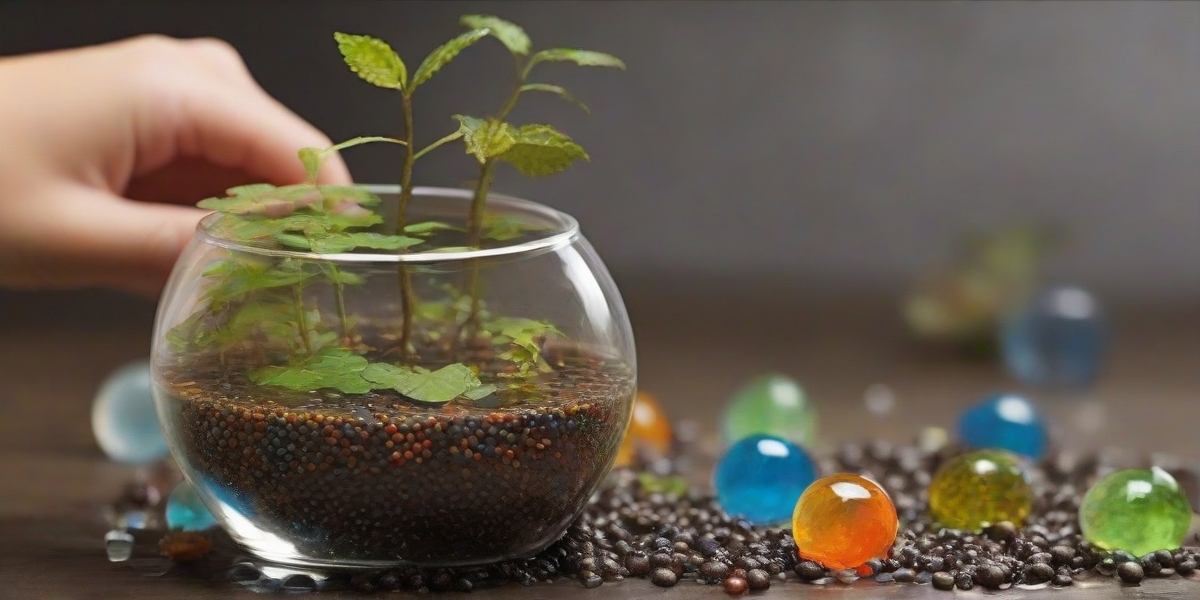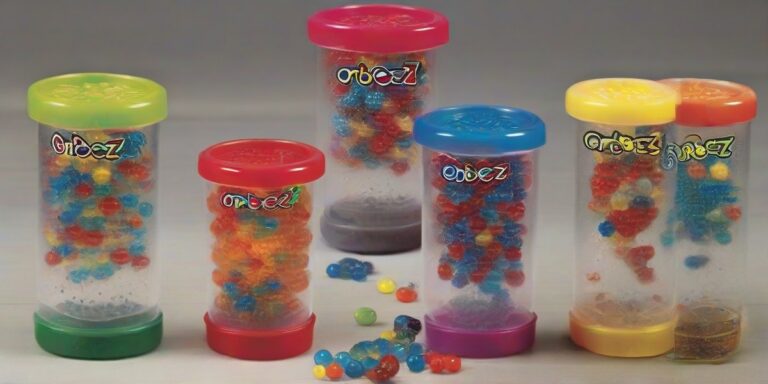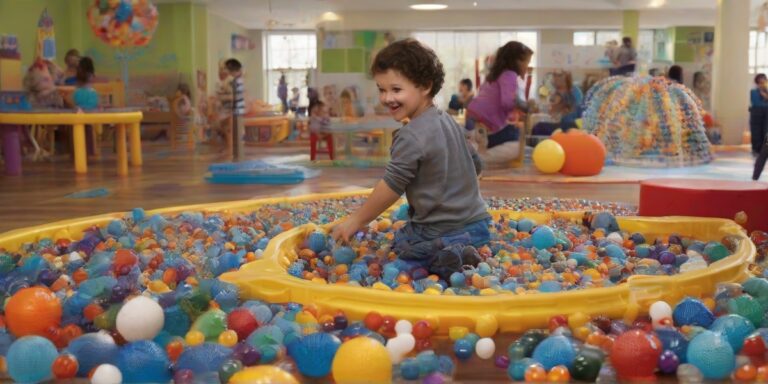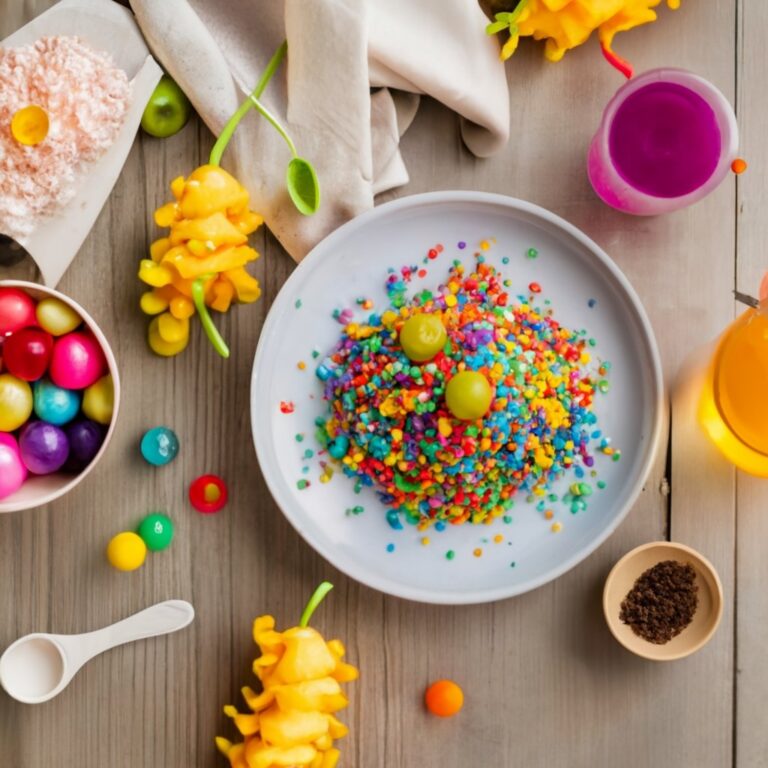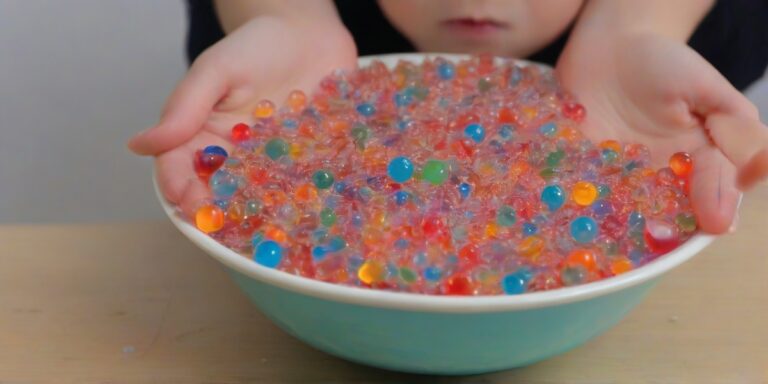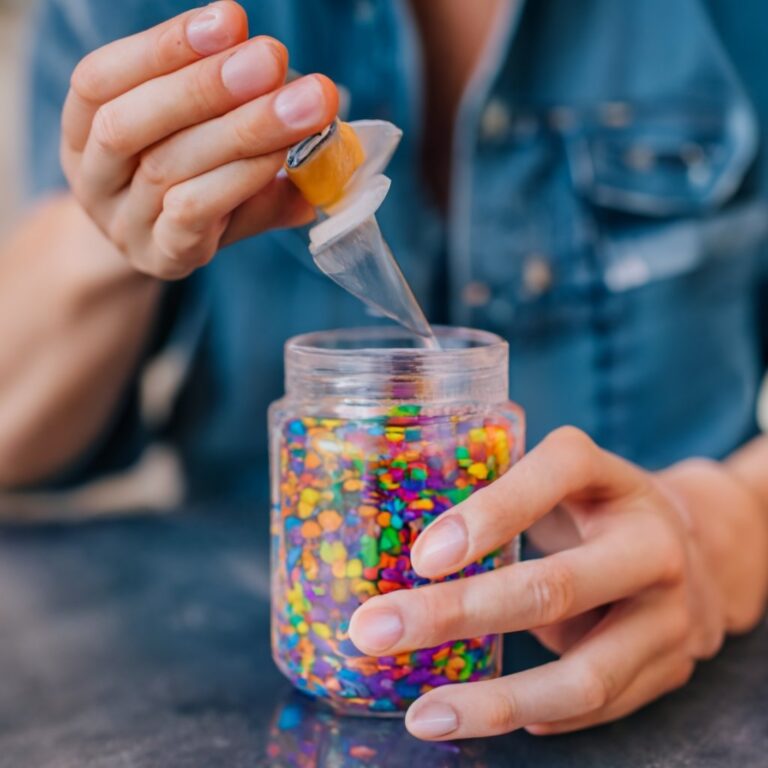Are water beads good for plants? Benefits and Uses Explained
Water beads have recently sprouted in popularity for uses way beyond children’s sensory play. These super-absorbent hydrogel balls can actually be strategically incorporated into potted plants and gardens for some surprising benefits. When carefully layered as hydration reserves or nutrient-filled carriers, the water-trapping polymer crystals can positively enhance plant health.
This innovative beads-meet-botany trend has fascinated ornamental and food growers alike. Water bead media allows directly infusing moisture and fertilizer into soil and planters. The hydrophilic gels then slowly discharge liquids to roots as needed for more balanced uptake. Much better than irregular watering!
Beyond their functionality, the transparent spheres also lend a visually stimulating dimension to any horticulture, almost like decorative additions. Their gel-based round shapes interspersed between foliage and blooms creates intriguing dimension. It’s no wonder the alluring orbs are gaining traction across gardening circles.
Hydration and Conservation Advantages of Orbeez for Plants
Utilizing water beads for moisture retention addresses one of the most common issues plaguing unsuccessful cultivators – inconsistent watering. Their ability to absorb and discharge hundreds of times their weight holds invaluable potential for beginners and busy plant parents.
Embedding these miniature reservoirs directly into beds ensures water steadily feeds roots. This promotes vigor and growth versus the stress of fluctuating dry and saturated cycles. Learn about how Orbeez react in different conditions and whether they can dry out over time.
Water beads in plantings also conserve ridiculous amounts of water otherwise lost to evaporation or runoff. This makes them especially useful in hot climates and drought-prone zones. Nutrient beads specifically allow precisely delivering fertilizer inside the balls’ internal matrix right to root zones for most efficient absorption.
Safety First – Regulations and Responsible Use
While these massively versatile gel balls offer loads of upside, educated precautions are advised as well. Water beads require safely monitored use around children given choking hazards. Ingestion can expand intestines with gel material also irritating digestive tracts.
When utilized correctly in enclosed planters, the risks are minimized. Seek BPA and phthalate-free beads compliant with Consumer Product Safety Improvement Act standards. Reputable eco-friendly brands clearly label concentrations of powder coating ingredients.
It’s also crucial following all usage guidelines for both indoor pots and outdoor garden integration. Most beads require pre-preparation before placement such as soaking then straining excess liquids. Improper application risks damaged plants from over-saturation or floating away beads. We’ll cover exact steps shortly for success!
The Complete Bead Breakdown can We Use Orbeez for Plants
Here we’ll explore everything about water beads as “plant friends” – from underlying mechanisms to real user tips.
Whether you’re a lawn enthusiast, professional nursery grower, or aspiring houseplant parent, harnessing hydrogels helps any cultivation hobby. Let’s unlock the full potential of this game-changing botanical trend!
Frequently Asked Gel Ball Questions
Let’s answer some other popular hydrogel FAQs covering usage as mulch, impacts on soil, integration with hydroponics, pest risks, and safety considerations.
How do you use water beads for plants?
- Soak unexpanded beads overnight then strain excess liquid before mixing into soil. This prevents oversaturation.
- Blend beads evenly through potting mix, placing small clusters directly surrounding roots and bulbs for hydration reserves.
- The optimal ratio is 70% soil, 30% hydrogels by volume. Adjust amounts based on plant type.
Do water beads keep flowers alive?
Yes! The hydration properties keeps moisture available during heatwaves and droughts. Water beads also slowly feed steady nutrients when paired with fertilizers. These stable conditions prevents flower wilting, prolonging blooms.
Can you put gel beads on plants?
We don’t recommend leaving dry beads atop soil as they can blow away or be ingested by pets. Mixed properly inside soil, the soaked balls hydrate plantings from below optimally. Some exceptions include using beads in decorative open-air displays or mini gardens without soil.
How long can water beads stay saturated?
Properly prepared water beads retain moisture 1-4 weeks before drying, depending on environmental factors. Refill or replace beads once clear/white signaling water depletion. The beads can be reused throughout multiple grow cycles making them highly sustainable.
What materials are in fertilizer beads?
Specialized plant food gel beads contain NPK macros like nitrogen, phosphorus, and potassium plus various micronutrients. Timed released through the spheres’ semipermeable walls. The hydrogel balls protect fertilizer longevity against environmental breakdown.
What are some uses for water beads?
In addition to plant care, water beads find growing uses as decorative accents, sensory play, animal terrariums, athletic cooling garments, spill clean-up, and firefighting gels. Their incredible water-holding capacity enables many innovations!
Are water beads toxic for plants?
Properly prepared, non-toxic, cpSIA-compliant beads are harmless and beneficial for plants. However, ingesting loose bead dust before soaking can irritate digestive systems so take precautions around children and pets during preparation.
Can water beads work as seed mulch?
Yes, activated gel balls make excellent protective mulch layers after sowing seeds or around emerging seedlings. Their huge water holding capacity keeps underlying soils moisturized while blocking light inhibiting premature germination.
Simple scatter presoaked beads 1/2 inch deep across beds and gently press down forming a nurturing hydrogel cushion. Reapply every 2-3 weeks as needed until plants establish.
Will beads alter my soil pH or structure long-term?
Properly rinsed and neutralized hydrogels should not significantly impact soil chemistry or nutrition. Their polymer chains simply absorb then discharge liquids without leaving behind residues.
With cheap brands, residual manufacturing powders could leech interfering with cation exchange capacities. This is why third-party safety certifications ensure quality inputs.
Over multiple seasons, some clumping or accumulation of inert gel fragments may compact dirt. Simply turnover beds annually to restore aeration and avoid any acidification.
Can I incorporate water beads in hydroponic systems?
Absolutely! Water beads offer a safer substitute for problematic perlite or vermiculite media commonly clogging hydroponic pumps and drip lines over time. The beads flow smoothly preventing equipment damage while retaining moisture and optional nutrients.
Will gel balls attract infestations like fungus gnats?
A minimal risk exists given the beads themselves contain no organic matter appetizing to pests. Just ensure mixing hydrogels into properly sterilized soilless media absent larvae, eggs or spores. Monitoring moisture levels also allows catching issues early before population explosions.
Are salts from fertilizer beads unsafe for plants?
Correctly pre-rinsed beads should not leave any salt residue damages behind on roots or leaves. Quality hydrogels certified for cultivation use minimize wasted mineral runoff. While slowly diffusing nutrients inward to soils, harmless purified water also transfers outward hydrating plants.
As always start with smaller bead ratios and compatible plants to observe reactions. Then continue amending more spheres once satisfied with positive growth responses season after season!
Can Water Beads be Used for Plants

Water beads offer game-changing advantages for cultivation, but effectively harnessing their potential requires selecting and preparing the right hydrogel products. With so many bead sizes, shapes, and material types now available, the choices can get overwhelming!
Here we’ll break down the key varieties along with trusted buying sources and simple preparation methods for seamlessly integrating these “plant supplements” into your containers. Consider these guidelines your water beads 101 crash course so you can start beading worry-free.
Bead Types and Attributes
Polymer water beads span a spectrum of sizes ranging from 3-15mm diameters on average. Larger beads obviously absorb and discharge more moisture over time. Tiny spheres diffuse quickest delivering water in concentrated bursts better for tightly packed bonsai soils. Find out the how big can an Orbeez get in this article.
Besides size, also consider shape. Most common are spherical beads, but you can also find fun options like hearts, stars, and clovers. Shape doesn’t affect function, only visual appeal when mixed decoratively into planters.
The bead formula dictates safety, eco-friendliness, and fertilizing potential:
- Plain water-only beads must be combined with liquid feeds.
- Fertilizer beads have NPK nutrients encapsulated inside to self-feed plants.
- Salt beads slowly leech trace mineral elements often lacking for blooms.
- Some beads come colorized for decorative looks. These don’t impact performance.
- Seek BPA-free, non-toxic beads compliant with toy safety standards.
Reputable Water Bead Suppliers
Quality hydrogels certified safe for indoor use come recommended over random dollar store packs with questionable manufacturing. Search brands like Miracle-Gro, Jelly Drops or Soil Moist at nurseries and hardware stores. Garden specialty e-shops also showcase trustworthy plant-specific lines.
We suggest steering clear of no-name loose orb listings on marketplaces lacking verifiable origins. Paying slightly more for regulated beads brings peace of mind that the materials contacting your plants pose no health risks.
Pre-Treating Beads Before Planting
Never add dry unused water beads straight into potting mixes! The unused spheres must first undergo an activation process to prime for moisture absorption:
- Measure out desired volume of dry beads.
- Submerge them completely in a bowl filled with clean pH-neutral water.
- Soak 8-12 hours until fully expanded and gel-like.
- Strain then spread cleaned beads on an old window screen or mesh to dry slightly. This prevents oversaturating soil later.
Now activated beads are prepped for seamlessly stirring into any houseplant mix or garden bed! Position them near roots, bulbs, and seedlings 2-3 inches below soil surfaces as you’d normally amend fertilizers or compost.
Water Bead Basics for Plant Health
Proper water bead integration starts with understanding exactly how the hydrogels hydrate plants differently than traditional watering. Learning ideal placement also ensures the spheres can maximize their moisture-retention benefits.
Let’s review some application basics covering specialized uses for orchids, evenly diffusing beads in mixes, and optimal depth placement. Follow these guidelines and the resilient orbs will keep your gardens thriving season after season!
Orchid Water Reserves
Orchids feature water-storing pseudobulbs covered by permeable velamen tissue feeding aerial roots. This complex, moisture-dependent anatomy makes them perfect for pairing with water beads.
Bury activated beads among lower exposed orchid roots surrounding the pseudobulbs and rhizome. This creates a supplementary hydro source as aerial roots rapidly absorb then transmit water up to leaves. For especially thirsty varieties like phalaenopsis, continue amending beads bi-weekly to establish lasting reserves.
The spheres provide vital hydration between manual waterings, protecting against dehydration damage. Take care not placing beads directly against stems or leaves risking crown rot for any species.
Distributing Beads in Mixes
Achieving an even 70/30 blend of soil to water beads optimizes moisture diffusion. Carefully scatter measured portions throughout flat layers before mixing together to integrate spheres. Watering activated beads before planting allows swelling first, so they don’t clump later.
When transplanting mature plants into bead-blended mediums, first shake root balls gently to loosen old soil allowing the gels better contact. Top dress additional beads around stems for boosted access.
This evenly integrated distribution lets hydrogels hydrate soils from all directions rather than isolated pockets. Routinely turn pots while watering too so moisture permeates sideways to the bottom.
Depth Placement Guidance
A 2–3-inch bead placement depth works well for most plants. This allows sufficient surrounding soil weighing down beads before upper layers dry out faster. Deep enough installation also prevents pets or children digging up gels.
For shallower pots like succulent arrangements, adjust to 1 inch depth max. Bury too low risks compressing delicate shallow roots or encouraging bottom-rot fungus from excessive moisture if drainage holes clog.
Scatter additional beads across the very top of densely planted beds until soaked then firming down into gaps with pressure. This tops off moisture levels at actively growing root zones near surfaces.
Monitor moisture meters to adjust bead amounts, transplanting plants higher as the hydrogels expand roots downwards chasing hydration over time.
Water Gel Fertilizer Pouches

Specialized water beads with encapsulated fertilizers offer effortless nutrient feeding compared to conventional liquid options. These mineral-infused hydrogels utilize timed release to constantly administer fuels supporting healthy blooms.
Rather than sporadic feedings from top-dress granules quickly depleting in soils, the polymer sphere slowly diffuse encapsulated NPK elements, micronutrients, and supplements through semi-permeable walls. Release rates adapt to environmental moisture and temperature.
Let’s explore how these fertilizer beads work, the custom blends possible, and which plants gain the most growth advantages from their precision delivery.
Learn more about the growth process of Orbeez and how long they take to reach their full size.
Gradual Diffusion Functionality
Water-soluble fertilizer compounds become trapped inside bead particles during production. Moisture triggers the orbs to swell with water entering through pores, partially dissolving some internal nutrients.
Concentration gradients then slowly drive these mineral salts from high density inside beads into lower surrounding soils. As interior fertilizer depletes, more dissolves maintaining steady diffusion spanning months.
This responsively calibrated discharge prevents toxic nutrient spikes burning tender roots. Language also reduces fertilizer leaching from unabsorbed excess before washing away unlike poured mixes.
Customizing Bead Nutrient Loads
While pre-made fertilizing beads offer balanced NPK ratios ideal for most plants, you can also customize blends:
- Activate dry hydrogels overnight as previously described.
- Drain then mix beads in desired liquid fertilizer solution.
- Allow beads to re-absorb the diluted feed concentration until swollen.
- Rinse beads then mix into soils per standard application.
This allows tweaking nutrients to correct deficiencies. For example, yellowed leaves often indicate insufficient nitrogen load needing higher urea levels. Just soak beads in nitrogen-concentrated liquids before planting in target areas near affected growth.
Top Plant Fertilizer Applications
While all vegetables and ornamentals utilize fertilizer beads well, they especially excel boosting:
- Flowering plants – promotes prolific blooms
- Chlorophyll-rich foliage – encourages vibrant color
- Root crops like carrots, radishes, onions – enhances edible yields
- Citrus trees – prevents deficiency-related dead limbs
- Container gardens – compensates frequent nutritional loss
Position beads closer to actively developing fruits, leaves, and meristems for priority nourishment of new structures. The timed-release functionality continues providing elements as plants require all season, eliminating guesswork.
Simply mix the pre-fed orbs into soils as detailed earlier or contained displays lacking dirt altogether. Then relax knowing your plantings have a steady diet from these long-lasting hydrogel treats!
Conserving Water with Polymer Crystals

Beyond hydrating potted plants, water beads offer enormous potential benefits conserving outdoor water usage across gardens and lawns. Strategically buried absorptive hydrogels greatly reduce irrigation demands in sunny, drought-prone environments.
Water conservation advantages stem from the polymer’s unrivaled moisture-retention capacities combined with subterranean installation. Beads buried 4-6 inches below ground soak up then retain rainfall or sprinkler outputs before extreme evaporation transpires. This banks reserves through cloudless stretches.
By installing moisture-banking layers in garden beds and beneath turf grass, routine water needs decrease up to 50% or more. Lush growth still thrives tapping beads during dries without constant top-off. Any supplementary irrigation also transfers higher efficiency into subsoils already primed to hold it there.
Ideal Outdoor Applications
Water bead infusion excels across lawns, flower beds, street mediums, golf course fairways and public gardens in zones facing seasonal droughts or strict water restrictions. Based on their supersized water-locking polymer chains, just a few pounds of beads treats 100+ square feet stabilizing moisture long-term.
This makes water beads ideal for establishing brighter, lusher urban plantings in arid climates like Arizona, Nevada, Utah, New Mexico where extra hydration better withstands intense summer heat. Just reactivate buried beads a few times per year as needed.
Environmental Sustainability Factors
Responsibly utilizing water beads to slash outdoor irrigation usage also confers meaningful environmental gains. Reducing reliance on tap water and well pumping preserves preciously limited drinking water reserves. Minimizing runoff also decreases non-point pollution contaminating nearby lakes, rivers, and watersheds.
As climate change intensifies droughts worldwide, maximizing agriculture and ornamental water retention with hydrogels will only increase in importance. This ingenious polymer invention offers sustainable hope for resilient plants and communities despite shifting elements.
Innovative Bead Planter Projects
Beyond amending traditional pots and gardens, crafty growers have begun intergrading water beads into unique displays like self-watering containers, living wall sculptures, terrariums, and open-air plant arrangements.
Let’s explore some inspiration for DIY bead planters to show off your foliage while simplifying care through these built-in hydro reservoirs. Grab your orbeez and get ready for the ultimate combinations of form, function, and style!
Self-Watering Planters
Construct custom self watering planters or repurpose everyday items like crates, barrels, and buckets outfitted with water bead reservoirs. Simply layer activated beads across bottom drainage levels before filling remaining space with fast-draining soil mixes.
As lower layers saturate soils, gravity, and wicking action feeds abundant moisture upwards to roots for weeks. Place drain trays underneath to catch any overflow. Adding filler materials like pebbles between layers prevents soil from filtering down.
For hanging options, integrate bead pouches into wall pockets or hanging coir liners. The orbs’ excellent water retention minimizes staining surfaces under suspended plants prone to leakage.
Decorative Living Walls
Build stunning living walls, standing displays, and wire topiaries anchored into beds of hydrogel balls. The beads here act as decorative fillers for open-air designs rather than enclosed dirt plots.
Simply shape activated spheres across the base as a nonsolid substitute for florist foam. Then insert trimmed air plant tillandsia, orchid keikis, succulent cuttings etc. For stability, weave stems through bead mounds and decorative mesh stapled to frameworks. Mist as needed between bead rehydration.
Mini Terrarium Worlds
Water beads lend fun new textures and moisture balance for closed-environment terrariums. Layer activated gels across bottoms of glass vessels before adding drainage gravel and soil. For 100% hydro set ups, skip dirt and position plants directly into beds of fertilizer beads.
These self-contained microcosms thrive on humidity from the water-retaining spheres. Mist lids and partially vent to prevent excess condensation from developing. Enjoy watching how roots explore this alien orb terrain!
Final Considerations Grow Plants in Water Beads
We’ve covered extensively how water beads can create thriving, water-efficient planted displays indoors and out when integrated responsibly. Always adhere product guidance for safe prep and usage per unique species.
Seeking non-toxic CPSIA certified beads supports environmental and health stewardship. Dispose of old hydrogels in general waste, not compost piles which don’t breakdown the polymer chains. To understand the environmental impact of Orbeez on environment, check out this article.
For unused surplus beads, explore creative secondary uses like:
- Whimsical gift basket filler
- Festival face/body art decor
- Bottled kids’ sensory activities
- Handmade stress balls
- DIY reusable ice packs
- Edible cake and fruit toppings
Just avoid contact with eyes, lungs or directly ingesting loose gel dust. With mindful precautions, this versatile media makes plant and craft care easier, more sustainable and fun!
We hope this complete water bead guide unlocked new potential for your cultivation projects – let your imagination grow wildly as the robust hydrogels feed spectacular gardens that WOW visitors. Enjoy your thriving botanical bead experiments!

